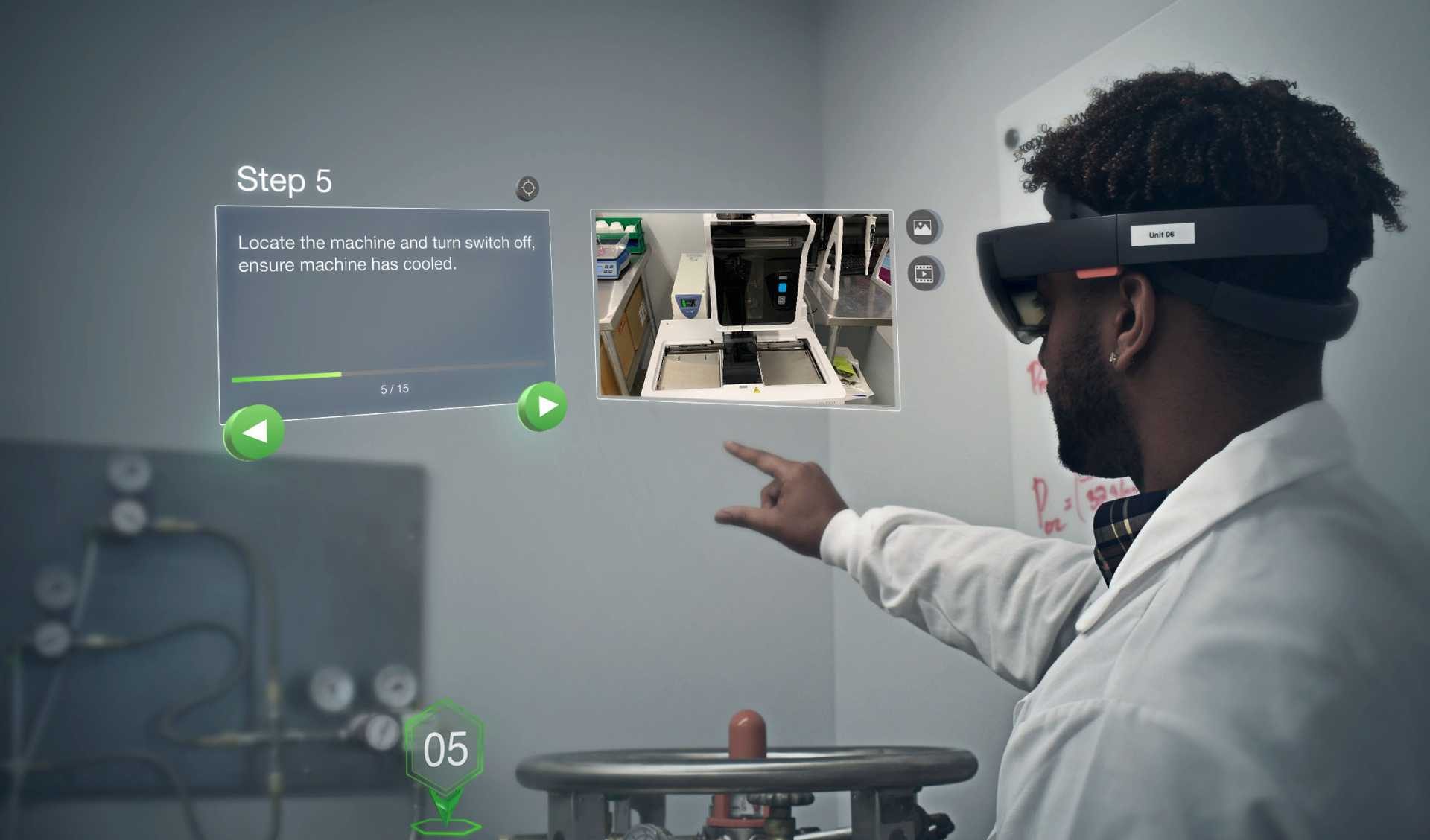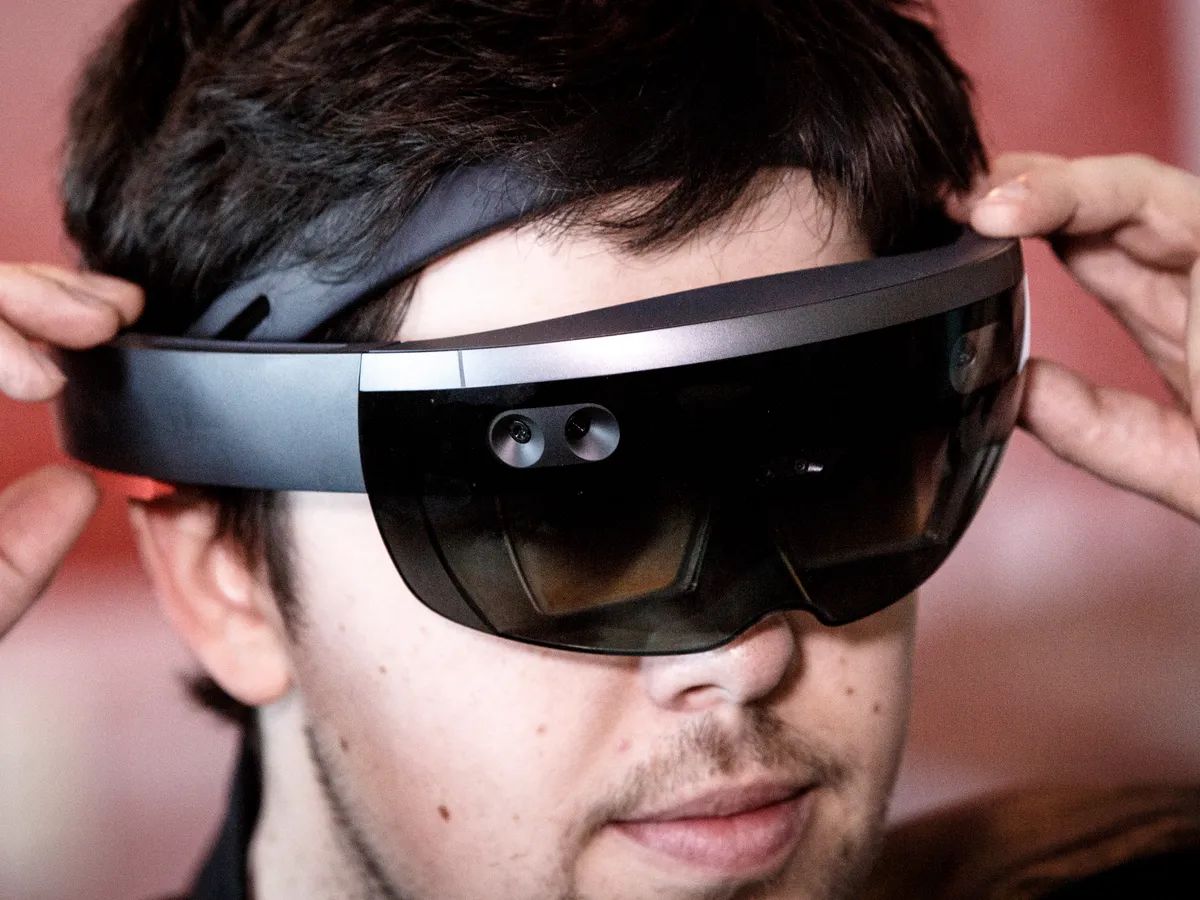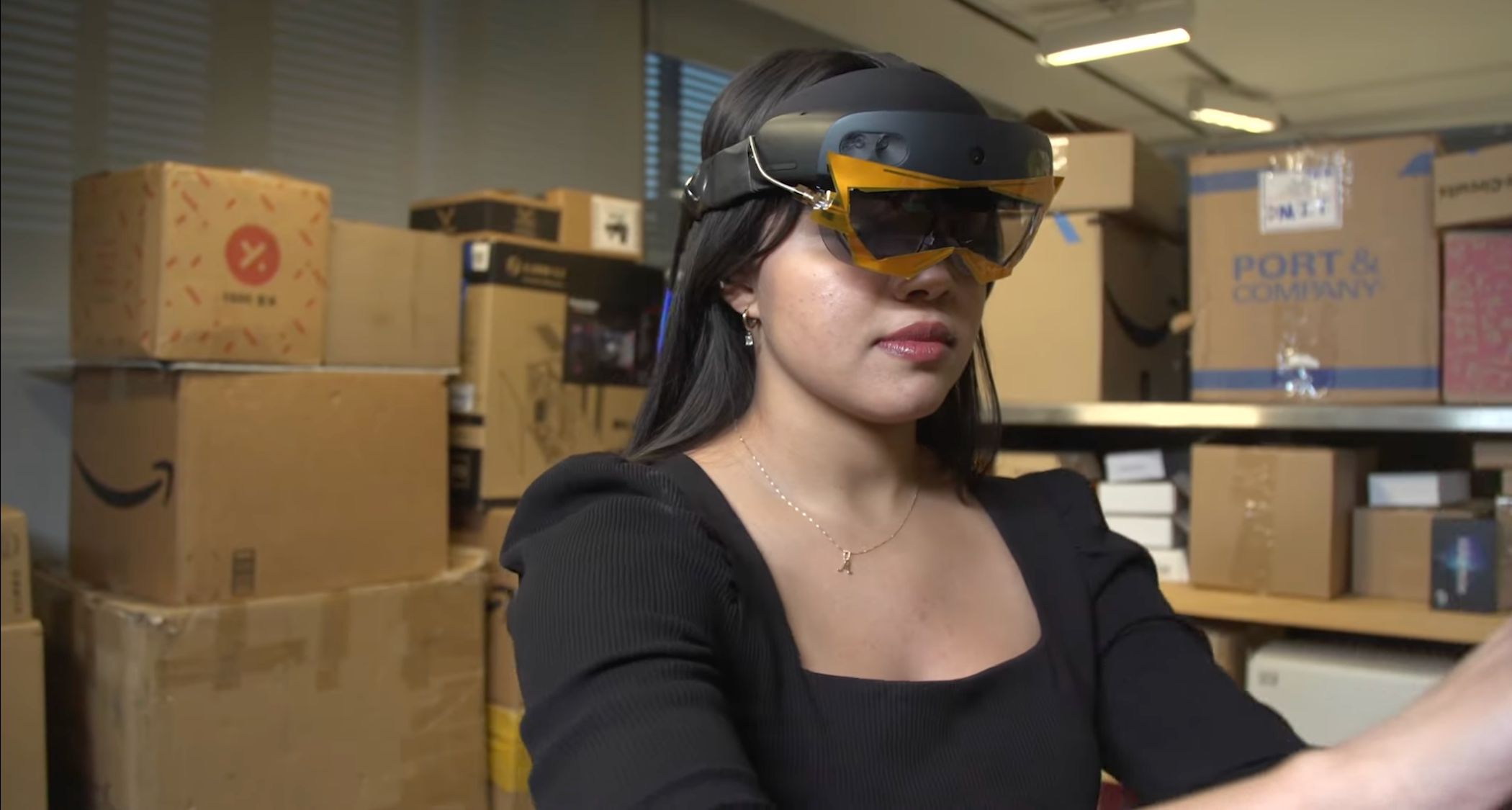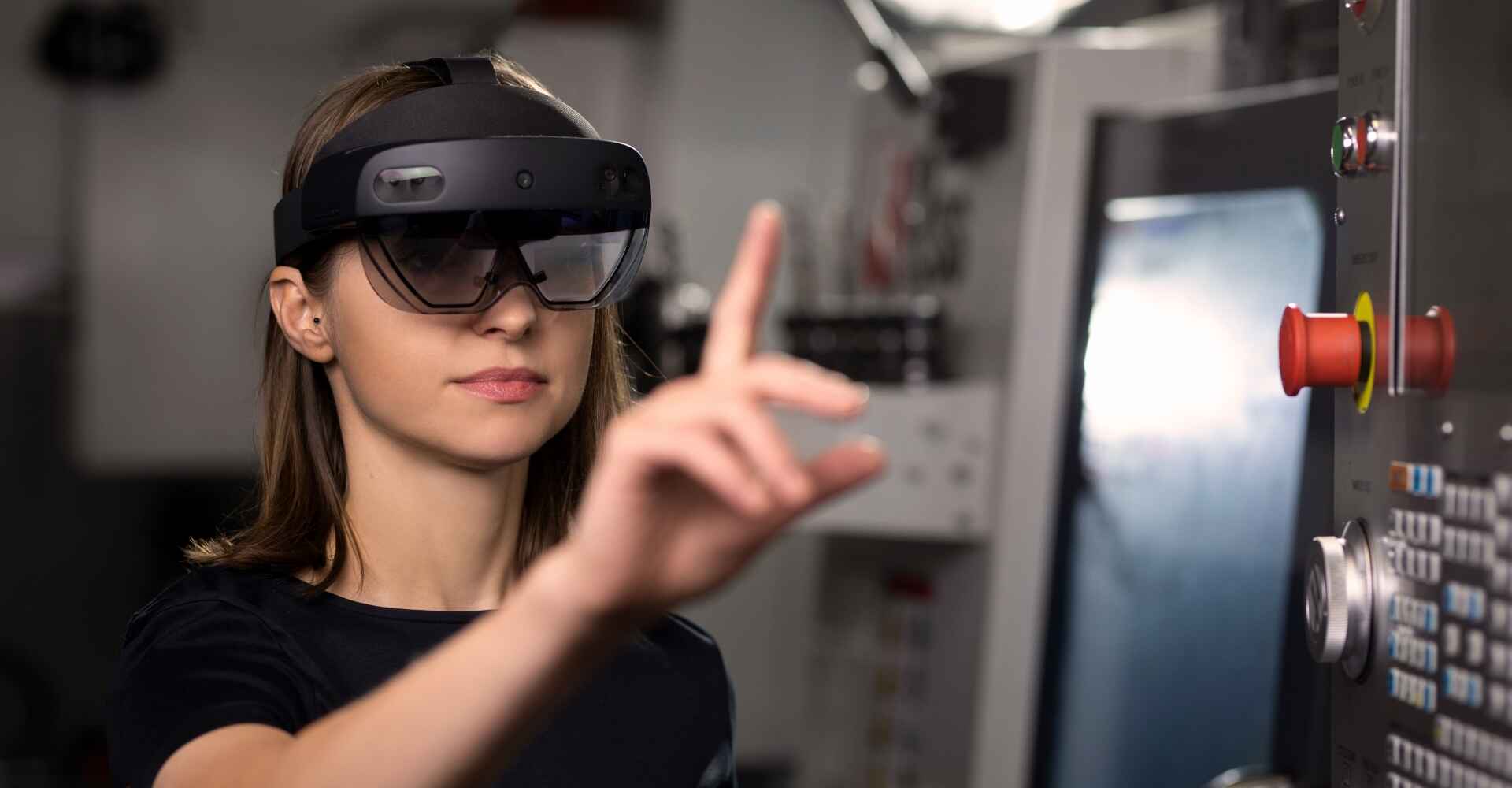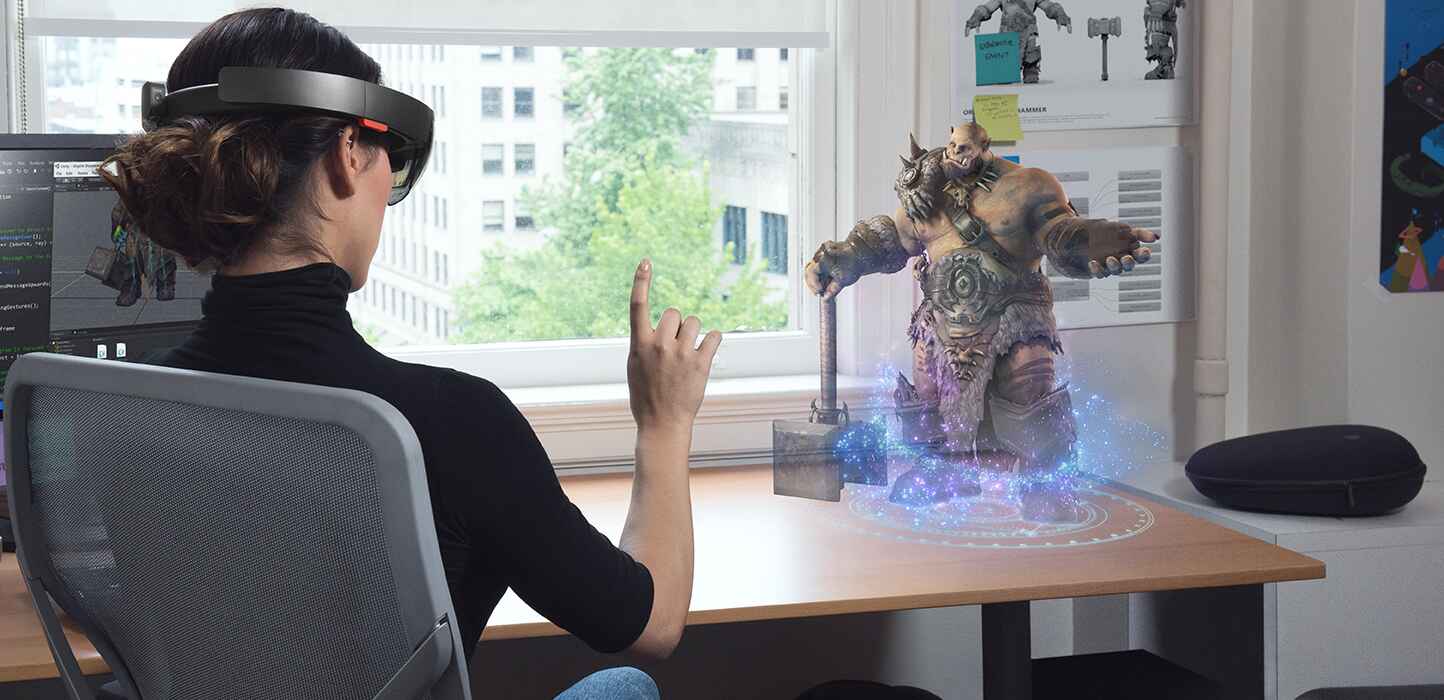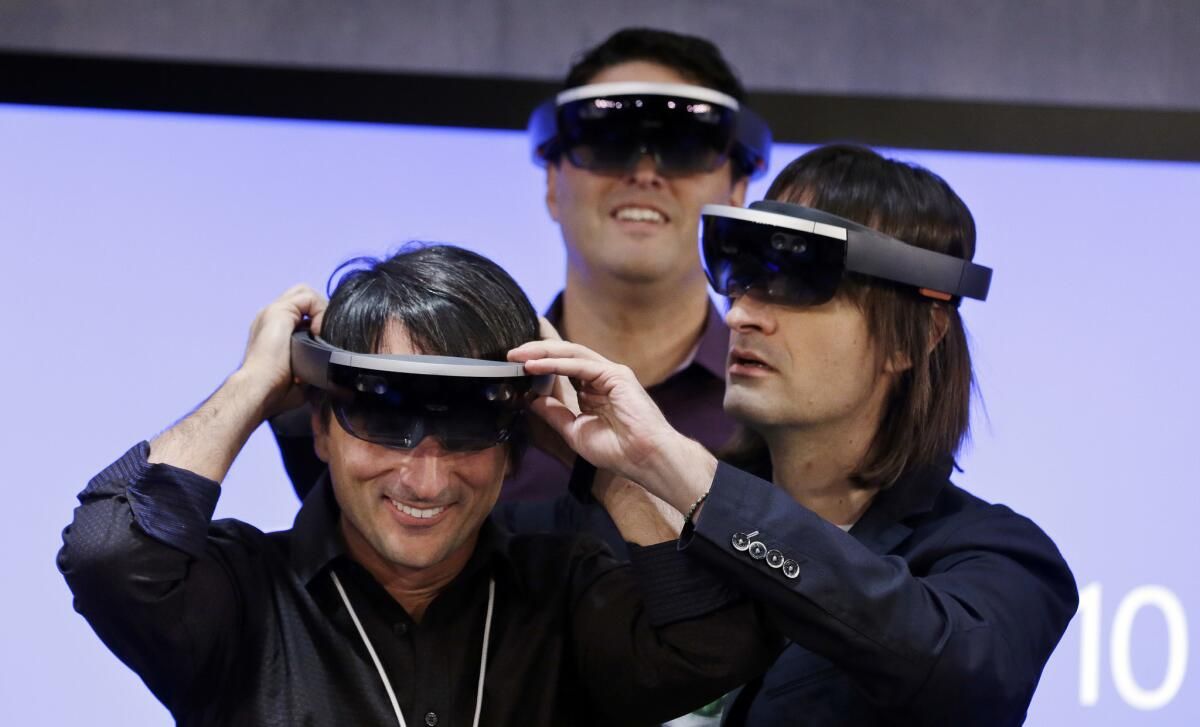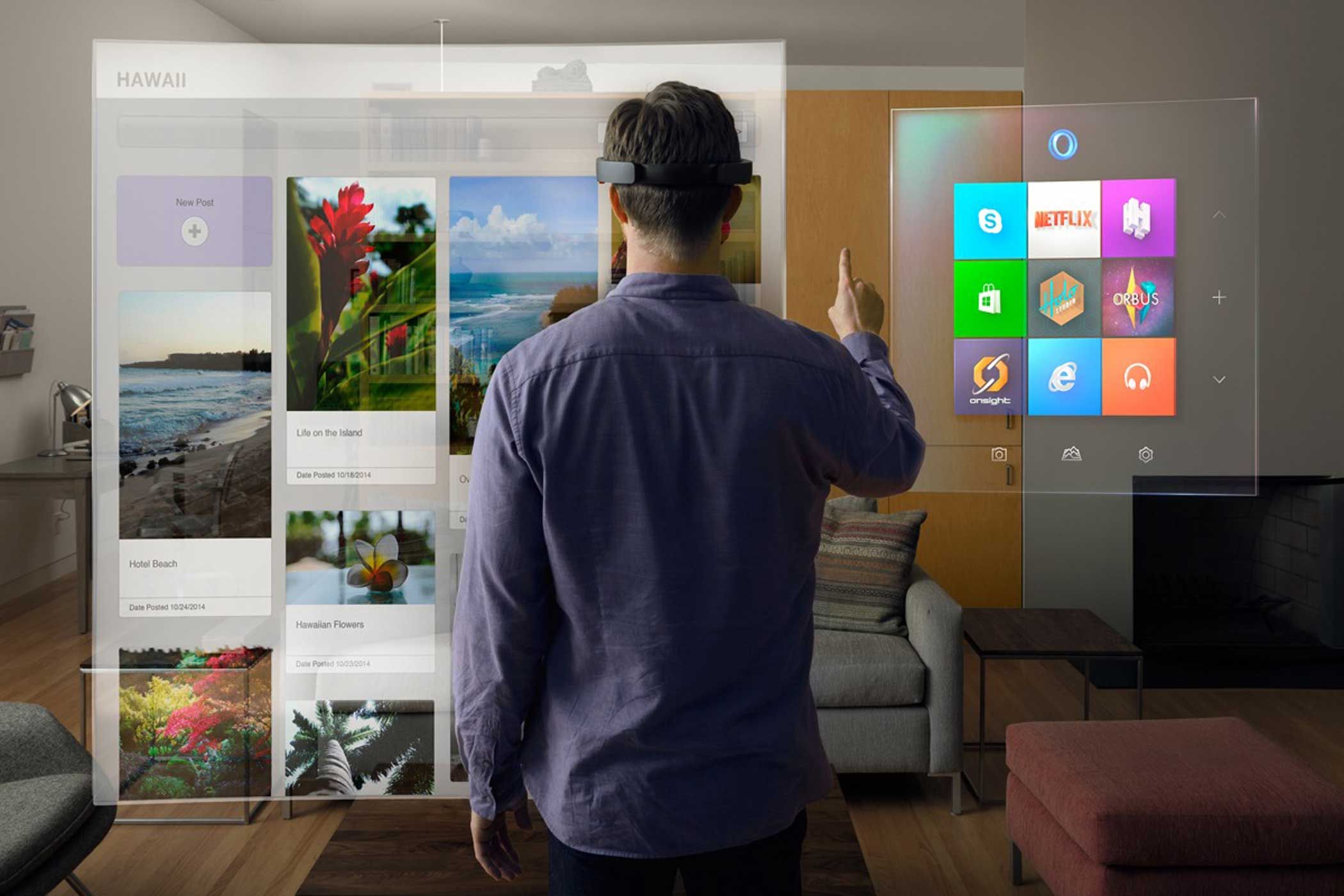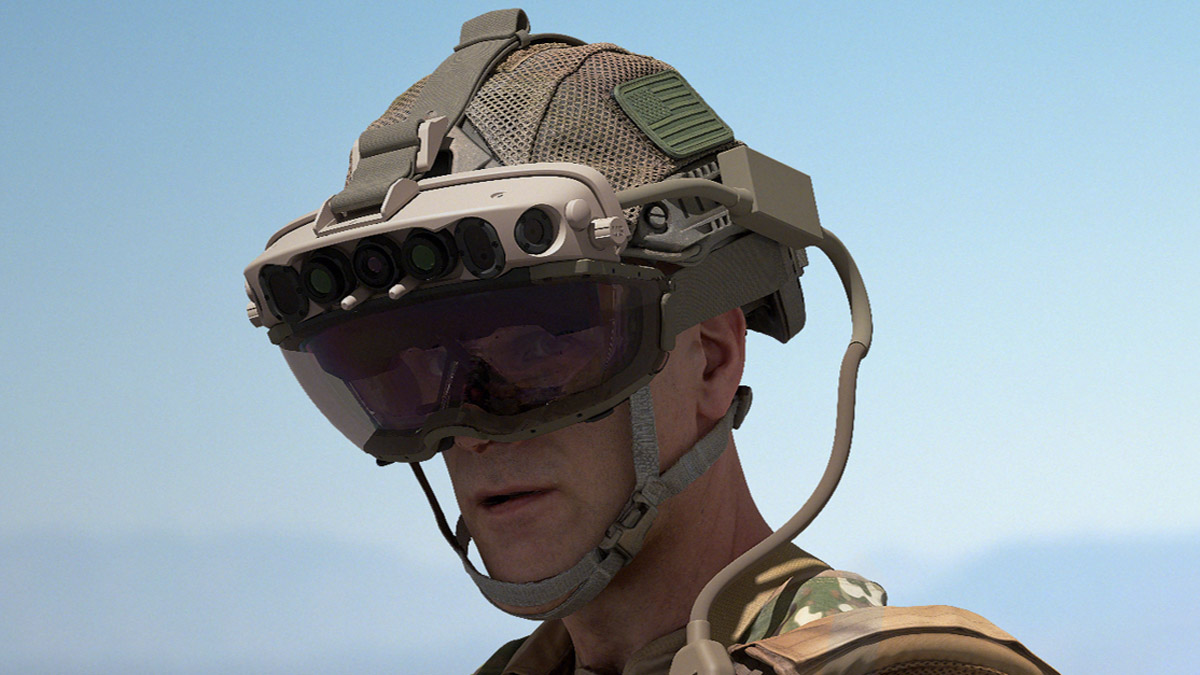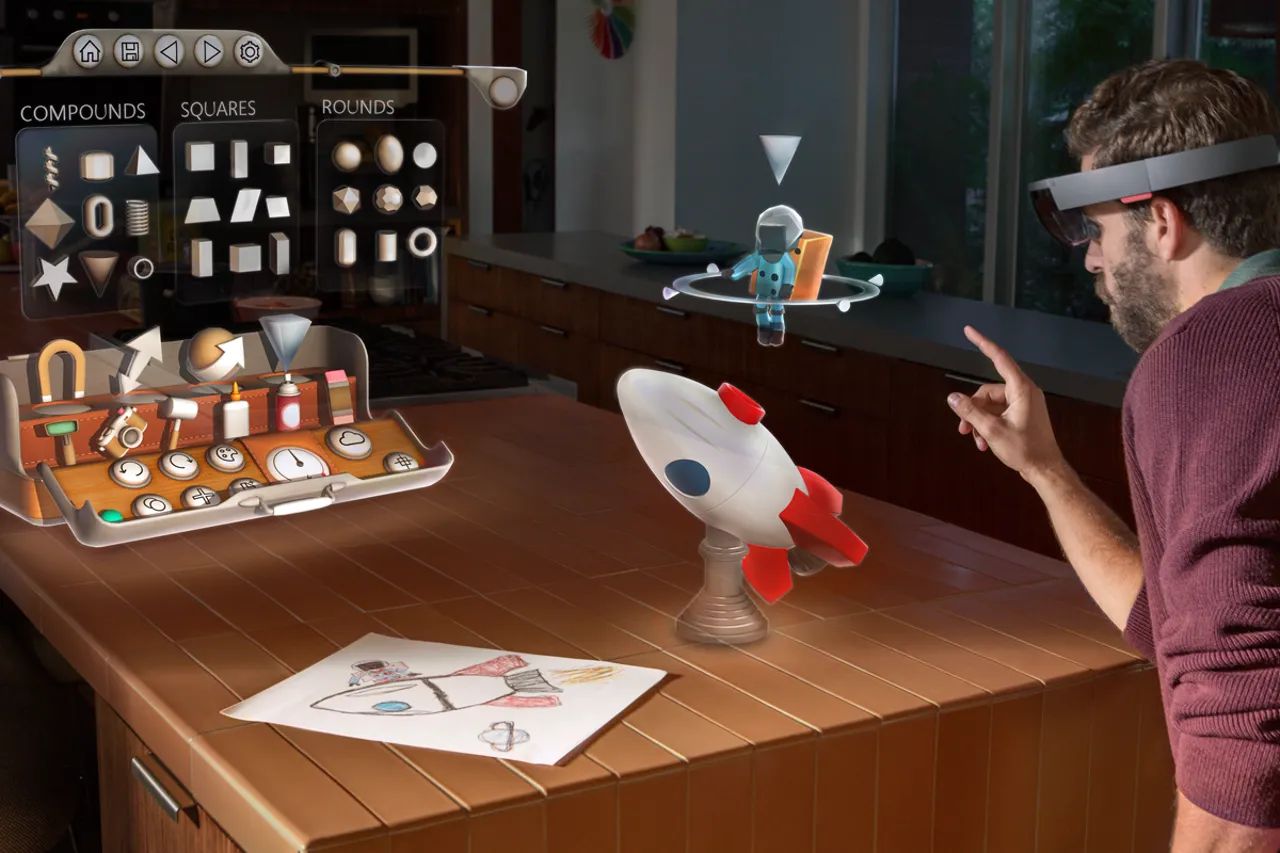Introduction
With the advancements in technology, virtual and augmented reality (VR/AR) have become increasingly prevalent in various industries. One remarkable device that has revolutionized these fields is the HoloLens. Developed by Microsoft, the HoloLens is a cutting-edge mixed reality headset that overlays holographic images onto the real world, creating an immersive and interactive experience.
The HoloLens offers endless possibilities for its applications, making it a game-changer in several sectors. Whether it’s gaming, education, healthcare, or manufacturing, the HoloLens has the potential to transform how we perceive and interact with technology. Its seamless integration of virtual and physical environments provides users with a unique and captivating experience.
This article will explore the diverse range of industries that can benefit from utilizing the HoloLens. From enhancing gaming experiences to revolutionizing training and improving productivity, the HoloLens opens up new opportunities for innovation and creativity.
Let’s delve into the exciting applications of the HoloLens in various sectors and witness how this remarkable device is shaping the future of technology.
Gaming and Entertainment
One of the areas where the HoloLens truly shines is in gaming and entertainment. The device allows gamers to immerse themselves in a virtual world overlaid on their real surroundings, creating a truly interactive and engaging experience. The HoloLens opens up a whole new dimension in gaming by blending the virtual and physical worlds.
With the HoloLens, gamers can transform any room into a virtual battlefield or adventure land. Imagine battling holographic enemies emerging from behind your couch or solving puzzles that materialize right before your eyes. The device offers a level of immersion and interactivity that traditional gaming consoles simply cannot match.
Moreover, the HoloLens enhances the multiplayer gaming experience by enabling players to see and interact with their virtual opponents in the same physical space. Collaborative gameplay takes on a new meaning as players strategize and work together in real-time, all while engaging with holographic elements in their environment.
Aside from gaming, the HoloLens also has the potential to revolutionize entertainment experiences. It can transform the way we watch movies, integrating virtual characters and effects seamlessly into our living rooms. Imagine feeling like you’re sitting next to your favorite actor or experiencing a concert with virtual performers right in your own home.
Furthermore, the HoloLens could bring interactive storytelling to a whole new level. Rather than passively watching a movie or reading a book, users can become active participants in the narrative. They can interact with holographic characters, explore virtual environments, and influence the course of the story.
In summary, the HoloLens offers limitless possibilities for gaming and entertainment. Its ability to blend the physical and virtual realms enhances immersion, interactivity, and collaboration, setting the stage for a new era of gaming and entertainment experiences.
Education and Training
The HoloLens has the potential to revolutionize education and training by providing immersive, interactive, and hands-on experiences. It brings learning to life by overlaying holographic content onto the real world, creating a dynamic and engaging educational environment.
In the field of education, the HoloLens can transform traditional classroom settings. Students can visualize complex concepts in 3D, allowing for a deeper understanding of subjects like anatomy, physics, and geography. They can explore interactive holographic models, dissect virtual organisms, or visit historical landmarks, all without leaving the classroom.
One significant advantage of the HoloLens in education is its ability to cater to different learning styles. Visual learners can benefit from the visual representation of information, while kinesthetic learners can interact with virtual objects, enhancing their understanding and retention of knowledge.
The HoloLens also has immense potential in vocational training. In industries like medicine, engineering, or aviation, trainees can practice and develop crucial skills in a safe, simulated environment. They can perform complex procedures, assemble intricate machinery, or even pilot virtual aircraft, all under the guidance of immersive holographic instructions.
Furthermore, the HoloLens enables remote collaboration and training. Students and professionals from different locations can connect virtually, sharing holographic content and engaging in real-time discussions. This opens up opportunities for collaborative learning and knowledge sharing across geographical boundaries.
Another exciting aspect of the HoloLens in education and training is its gamification potential. By integrating game elements, such as quests, challenges, and rewards, the device can make learning and training more enjoyable and motivating. It can transform mundane tasks into engaging activities, boosting learner engagement and retention.
In summary, the HoloLens holds enormous potential for education and training. Its interactive, immersive, and collaborative capabilities can revolutionize the learning experience, making education more engaging, effective, and accessible to learners of all ages and backgrounds.
Architecture and Design
The HoloLens presents a game-changing tool for professionals in the fields of architecture and design. By merging virtual models with the real world, the device offers architects and designers an unparalleled level of visualization, collaboration, and creativity.
With the HoloLens, architects can bring their designs to life in the physical space. They can overlay virtual blueprints onto real environments, allowing them to see how their designs fit and interact with the surrounding structures. This capability enables architects to make real-time adjustments and improve the overall functionality and aesthetics of their designs.
Furthermore, the HoloLens enables architects and clients to experience and explore architectural projects before they are built. Through interactive holographic walkthroughs, stakeholders can virtually walk through buildings, examine spatial layouts, and evaluate various design options. This not only enhances the decision-making process but also helps identify potential issues or improvements that might have been missed in traditional design methods.
Interior designers can also benefit from the HoloLens. They can present their design concepts to clients using augmented reality, allowing clients to visualize and interact with furniture arrangements, color schemes, and lighting options within their own spaces. This seamless integration of virtual and real elements enhances client involvement and helps ensure that design choices align with their preferences and expectations.
In addition, the HoloLens facilitates effective collaboration among architects, designers, and other stakeholders. With the device, team members can view and work on the same holographic models simultaneously, regardless of their physical locations. They can collectively make decisions, provide feedback, and make real-time adjustments, streamlining the design process and fostering creativity and teamwork.
Overall, the HoloLens revolutionizes architecture and design by bridging the gap between virtual and physical spaces. It enhances visualization, collaboration, and client engagement, allowing professionals to create innovative and visually stunning designs that are both functional and aesthetically pleasing.
Healthcare and Medicine
The HoloLens has tremendous potential to transform the healthcare and medicine industry, revolutionizing various aspects of patient care, medical training, and surgical procedures. With its mixed reality capabilities, the device brings augmented visualization and interactive experiences to clinicians, improving diagnostics, treatments, and patient outcomes.
In the field of diagnostics, the HoloLens allows medical professionals to view patient scans and radiographic images in an immersive and three-dimensional manner. This augmented visualization enables a deeper understanding of complex medical data, facilitating more accurate and informed diagnoses. Surgeons can overlay holographic images onto the patient’s body during preoperative planning, enhancing precision and reducing the risk of errors.
During surgical procedures, the HoloLens provides surgeons with real-time access to vital information without the need to shift their focus from the operating field. Surgeons can view patient data, imaging results, and holographic guidance overlaid onto their field of view, improving accuracy and efficiency. Furthermore, the device enables remote collaboration, allowing expert surgeons to guide and collaborate with colleagues in real-time, regardless of geographic locations.
In medical training, the HoloLens offers a unique opportunity to simulate realistic scenarios in a virtual environment. Medical students and residents can practice complex procedures, such as surgeries or emergency interventions, in a safe and controlled setting. They can interact with holographic anatomical models, practice decision-making skills, and receive instant feedback, enhancing their proficiency and confidence.
Patient education can also benefit from the HoloLens. Using interactive holographic simulations, healthcare providers can explain medical conditions, treatment options, and surgical procedures in a more accessible and engaging manner. Patients can have a clearer understanding of their conditions, resulting in better compliance and involvement in their own healthcare.
Additionally, the HoloLens has the potential to assist healthcare professionals in telemedicine and remote patient care. It allows doctors to virtually examine patients and discuss treatment plans regardless of geographic distances. This opens up opportunities to reach underserved populations, improving access to quality healthcare.
Overall, the HoloLens brings augmented reality to the healthcare and medicine industry, enhancing diagnostics, surgical procedures, medical training, patient education, and remote collaboration. Its applications have the potential to improve patient outcomes, enhance medical education, and change the way healthcare is delivered and experienced.
Manufacturing and Engineering
The HoloLens offers immense potential for the manufacturing and engineering industries, revolutionizing design, collaboration, and maintenance processes. By integrating holographic content into the physical workspace, the device enhances efficiency, accuracy, and productivity in various stages of the manufacturing and engineering lifecycle.
During the design phase, the HoloLens enables engineers and designers to visualize and interact with three-dimensional models overlaid onto the real world. They can examine intricate details, simulate assembly processes, and make real-time adjustments, improving the overall design and reducing the risk of errors. This augmented visualization allows for better communication and collaboration among design teams, streamlining the product development process.
Furthermore, the HoloLens enhances training and on-the-job performance in manufacturing and engineering. Workers can access real-time holographic instructions and guidance, reducing the need for complicated manuals or training sessions. They can receive step-by-step visual cues, ensuring accuracy and consistency in their tasks. This improves the efficiency and quality of manufacturing processes and reduces the margin for errors.
The device also facilitates remote collaboration and assistance. With the HoloLens, experts can provide real-time guidance and support to on-site workers, regardless of their physical location. This enables faster troubleshooting, reduces downtime, and enhances productivity in the manufacturing or maintenance process.
Moreover, the HoloLens can assist in equipment maintenance and repair. Technicians can access holographic overlays displaying relevant information, such as maintenance schedules, diagrams, or step-by-step repair procedures. This improves the accuracy and efficiency of maintenance tasks, reduces downtime, and increases overall equipment reliability.
Another notable feature of the HoloLens in manufacturing and engineering is its ability to track and analyze data. With built-in sensors, the device can gather real-time data on process performance, machine status, or environmental factors. This data can be visualized and analyzed in real-time, enabling engineers to identify inefficiencies, optimize processes, and make data-driven decisions for continuous improvement.
In summary, the HoloLens has the potential to transform manufacturing and engineering by improving design visualization, enhancing training and performance, facilitating remote collaboration, and optimizing maintenance and data analysis. Its application in these industries enables increased productivity, accuracy, and innovation, driving overall operational excellence.
Marketing and Advertising
The HoloLens presents a game-changing tool for marketing and advertising, offering unique and interactive experiences that captivate and engage consumers. The device brings augmented reality to the forefront, allowing brands to create immersive campaigns and deliver personalized experiences.
With the HoloLens, brands can leverage augmented reality to showcase their products or services in innovative and dynamic ways. They can create holographic displays that enable customers to interact with virtual versions of their products, explore different features, and visualize how they would fit into their own lives. This immersive experience helps build a stronger emotional connection with the brand and aids in making informed purchasing decisions.
Interactive holographic advertisements can also be used to engage customers in physical retail spaces or at events. Brands can create captivating experiences that involve customers in interactive games, quizzes, or virtual try-on sessions. This not only increases brand awareness but also encourages customer participation and creates memorable experiences that are likely to be shared on social media, amplifying the brand’s reach and impact.
The HoloLens enables marketers to personalize their messaging and content in real-time. By using data and analytics, brands can customize holographic advertisements based on individual preferences, demographic information, or past interactions. This level of personalization enhances customer engagement and delivers tailored messages that are more likely to resonate with consumers.
The device also offers a new avenue for experiential marketing. Brands can create immersive and highly memorable experiences that allow customers to interact with branded holograms or virtual characters. This creates a unique and lasting impression on consumers, fostering brand loyalty and word-of-mouth promotion.
Furthermore, the HoloLens facilitates comprehensive market research and data collection. Brands can gather real-time data on customer interactions, preferences, and behaviors, allowing for targeted and data-driven marketing strategies. This valuable insight helps optimize campaigns, improve customer targeting, and drive higher conversion rates.
In summary, the HoloLens has the potential to revolutionize marketing and advertising by offering immersive and interactive experiences that resonate with consumers. Its application in this field enables brands to create memorable campaigns, deliver personalized messaging, and collect valuable customer insights, ultimately driving brand awareness, engagement, and loyalty.
Remote Collaboration and Communication
The HoloLens is a game-changing device when it comes to remote collaboration and communication. With its mixed reality capabilities, the device allows teams to work together seamlessly, regardless of their physical locations. It enhances collaboration, improves communication, and enables remote workers to feel more connected and engaged.
One of the key benefits of the HoloLens in remote collaboration is its ability to overlay holographic images onto the real world. This enables team members to visualize and interact with 3D models, documents, and presentations in a shared virtual workspace. They can collaborate in real-time, making annotations or modifications that are visible to all participants. This fosters a sense of presence and enables a more immersive and engaging collaborative experience.
The HoloLens also facilitates effective communication among remote teams. With built-in audio and video capabilities, team members can see and hear each other as if they were in the same room. This enhances non-verbal communication cues and fosters more meaningful and effective interactions, promoting better understanding and decision-making.
Furthermore, the HoloLens enables real-time data sharing and visualization. Team members can access and manipulate shared data, documents, or visualizations simultaneously, enabling them to work together on complex tasks or projects. This real-time collaboration eliminates the need for lengthy email exchanges or disjointed communication, leading to increased productivity and efficiency.
Another remarkable feature of the HoloLens in remote collaboration is its ability to provide remote experts with a firsthand view of an on-site location. By wearing the HoloLens, workers in the field can share their perspective through live video feeds, allowing experts to guide them and provide real-time assistance. This enhances problem-solving capabilities, reduces travel costs, and minimizes downtime for resolution of technical issues.
Moreover, the HoloLens breaks down geographical barriers by allowing team members to work together regardless of their physical locations. Collaborative sessions, meetings, or training can be conducted virtually, improving access to expertise and talent from around the world. This opens up opportunities for global collaboration, innovation, and knowledge sharing.
In summary, the HoloLens revolutionizes remote collaboration and communication by providing a shared virtual workspace, enhancing non-verbal communication cues, enabling real-time data sharing, and breaking down geographical barriers. Its applications in remote collaboration promote teamwork, increase productivity, and foster seamless communication, ultimately transforming how teams work and collaborate in a distributed work environment.
Sports and Fitness
The HoloLens offers exciting possibilities in the realm of sports and fitness by combining virtual reality elements with real-world activities. Whether it’s training athletes, enhancing fitness routines, or providing immersive spectator experiences, the HoloLens has the potential to revolutionize the way we engage with sports and fitness.
For athletes, the HoloLens can provide immersive training experiences that enhance performance and improve skill development. Coaches and trainers can create holographic scenarios that simulate game situations or specific training drills. Athletes can interact with virtual opponents, visualize tactical strategies, or receive real-time feedback on their movements and techniques. This immersive training improves decision-making, reaction times, and overall performance on the field or court.
In the realm of fitness, the HoloLens can transform traditional workout routines. With holographic guidance, individuals can follow interactive workout programs in their own space, receiving real-time instructions and feedback. This personalized and immersive approach to fitness motivates and engages individuals, making workouts more enjoyable and effective.
The HoloLens can also enhance group fitness experiences. In fitness classes, instructors can provide holographic demonstrations and virtual cues to guide participants through exercises or dance routines. This interactive and immersive approach promotes synchronization, coordination, and engagement among participants, resulting in a more dynamic and energetic workout environment.
Furthermore, the HoloLens has the potential to revolutionize spectator experiences in sports. Through augmented reality overlays, fans can access real-time player statistics, replays, or interactive elements during live events. This enhances the overall viewing experience and provides a deeper level of engagement for sports enthusiasts.
The device also offers new opportunities for remote coaching and sports analysis. Coaches can use the HoloLens to provide remote guidance and feedback to athletes, regardless of their physical location. They can analyze performance data, provide real-time insights, and offer personalized training plans, optimizing athletic development.
Moreover, the HoloLens can facilitate virtual sports experiences. Users can engage in virtual sports simulations, competing against virtual opponents or challenging their own personal best records. These experiences combine physical movements with virtual elements, providing a unique and immersive gaming experience.
In summary, the HoloLens holds great potential in the world of sports and fitness. From immersive training experiences to enhanced spectator engagements, the device can revolutionize how athletes train, individuals workout, and sports enthusiasts enjoy live events. Its integration of virtual and real-world elements opens up new possibilities for performance enhancement, physical activity, and interactive sports entertainment.
Conclusion
The HoloLens is a groundbreaking device that has the power to reshape various industries and revolutionize the way we perceive and interact with technology. From gaming and entertainment to education and training, from architecture and design to healthcare and medicine, and from manufacturing and engineering to marketing and advertising, the HoloLens offers endless possibilities for innovation, productivity, and creativity.
In gaming and entertainment, the HoloLens provides an immersive and interactive experience, allowing gamers to blend virtual and physical worlds. Education and training are enhanced by the device, offering 3D visualization and interactive learning experiences. Architects and designers can bring their creations to life and collaborate in new ways, while healthcare professionals can benefit from augmented diagnostics, surgical procedures, and remote collaboration.
Manufacturing and engineering industries can optimize their processes through holographic design visualization, remote collaboration, and maintenance assistance. Marketing and advertising can leverage the HoloLens to create immersive experiences, personalize messaging, and collect valuable customer insights. Additionally, the device has the potential to transform remote collaboration and communication, enabling teams to work seamlessly across different locations.
Even in sports and fitness, the HoloLens offers new training methods, immersive workouts, and enhanced spectator experiences. With its mixed reality capabilities, it combines virtual and physical elements to engage individuals and provide innovative solutions in the sports and fitness realm.
Overall, the HoloLens breaks boundaries and opens new frontiers across a wide range of industries. Its capabilities in augmented visualization, interactive experiences, and remote collaboration have the potential to transform how we work, learn, play, and communicate. The possibilities are limited only by our imagination, and as technology continues to advance, the HoloLens will undoubtedly play a significant role in shaping the future of these industries.







